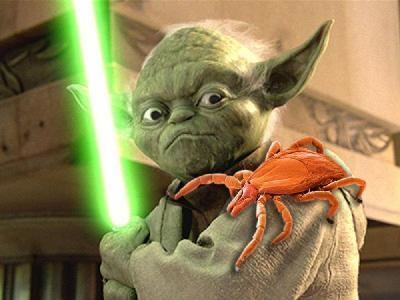Subclass Rickettsidae Family Midichloriaceae Rank Genus | Phylum Proteobacteria Higher classification Midichloriaceae | |
Similar | ||
Midichloria is a genus of Gram-negative, non spore-forming bacteria, with bacillus shape around 0.45 µm in diameter and 1.2 µm in length. First described in 2004 with the temporary name IricES1, Midichloria species are symbionts of the hard tick Ixodes ricinus. They live in the cells of the ovary of the females of this tick species. These bacteria have been observed in the mitochondria of the host cells, a trait that has never been described in any other symbiont of animals. Midichloria bacteria seem to consume the mitochondria they parasitize, possibly using them as a source of energy and/or molecules to multiply. The interaction of these symbionts with their host is currently unknown, though the 100% prevalence in the females of the host tick seems to suggest a mutualistic association.
Contents
Species

Only one species, Midichloria mitochondrii, is described in this genus. Molecular screenings, however, have detected the presence of related bacteria in other tick species, as well as in other blood-sucking arthropods, suggesting the possibility of horizontal transmission of these bacteria.

It was given its own family, the Midichloriaceae, in the Rickettsiales. Some poorly studied candidate species belonging to this family may include Nicolleia massiliensis and the unclassified Montezuma strain.
Naming

The name of this bacterial genus, Midichloria (mi.di.chlo’ria. N.L. fem. n.), is derived from the midi-chlorians, a symbiotic, microscopic life form described in the fictional Star Wars universe.
Genome
The genome of Midichloria mitochondrii has been sequenced by an international scientific consortium formed by researchers belonging to the University of Milan, the University of Sydney, the University of Valencia, the University of Pavia, and the University of Milan Bicocca.
The genome is 1.2 Mb, and it is, for most characteristics, very similar to the genomes of the other Rickettsiales, with two notable exceptions; the genome of Midichloria mitochondrii contains the gene sets for the synthesis of the flagellum and of a cytochrome oxidase of the cbb3 kind.
Midichloria and the origin of mitochondria
The Rickettsiales are widely regarded as being the closest relatives to mitochondria. Based on the fact that the Midichloria genes for the flagellum and for the cbb3 cytochrome oxidase were proven to be ancestral, it was inferred that they were present in the bacterium that established the symbiosis with the ancestor of the eukaryotic cell to become the mitochondrion. The sequencing of the genome of Midichloria mitochondrii thus allowed an updated reconstruction of the free-living mitochondrial ancestor. It was a motile bacterium able to survive in microaerophilic conditions. Both these characteristics may have played an important role in the beginning of the symbiosis between the eukaryotic cell and the mitochondrion.
